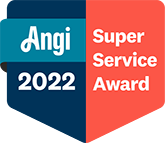In recent years, Vienna, VA, has seen a surge in eco-conscious homeowners looking to make sustainable choices for their properties. From solar panels to energy-efficient appliances, the trend toward greener living is more robust than ever. One aspect of home improvement that often goes unnoticed is fencing. Believe it or not, your choice of fencing can significantly impact your home’s sustainability. In this feature article, we will explore various sustainable fencing options that are both eco-friendly and aesthetically pleasing, perfect for the eco-conscious homeowner in Vienna, VA.
Why Choose Sustainable Fencing?
Before we dive into the types of sustainable fencing available, it is crucial to understand why making an eco-friendly choice in this area matters. Traditional fencing materials like vinyl and treated wood often come with a high environmental cost. The production processes for these materials contribute to pollution, and they are frequently sourced from non-renewable resources. By contrast, sustainable fencing options are typically made from renewable or recycled materials, and their production processes are designed to minimize environmental impact.
Additionally, sustainable fencing solutions often have a longer lifespan and require less maintenance, reducing the need for frequent replacements and repairs. This longevity not only benefits the environment but also offers cost savings in the long run.
Types of Sustainable Fencing Options
1. Bamboo Fencing
Bamboo is one of the most sustainable materials available today. It grows rapidly, with some species growing up to three feet in just 24 hours. This rapid growth makes bamboo an incredibly renewable resource. Bamboo fencing is not only eco-friendly but also offers a unique, natural aesthetic that can enhance the beauty of your property.
Pros:
- Renewable Resource: Bamboo grows quickly and can be harvested sustainably.
- Aesthetic Appeal: Bamboo has a natural, elegant look that can complement various landscaping styles.
- Durability: When properly treated, bamboo is resistant to pests and can withstand various weather conditions.
Cons:
- Maintenance: Bamboo requires regular maintenance to prevent rot and mold.
- Cost: High-quality bamboo fencing can be expensive.
2. Recycled Composite Fencing
Recycled composite fencing is made from a blend of recycled wood fibers and plastic. This type of fencing is designed to mimic the appearance of traditional wood but offers enhanced durability and reduced maintenance requirements. By using recycled materials, composite fencing helps reduce waste and conserve natural resources.
Pros:
- Low Maintenance: Composite fencing does not require painting or staining and is resistant to rot and insect damage.
- Durability: This fencing option is designed to last for many years, reducing the need for replacements.
- Recycled Materials: By using recycled wood and plastic, composite fencing helps reduce landfill waste.
Cons:
- Cost: Composite fencing can be more expensive upfront compared to traditional wood fencing.
- Appearance: While composite fencing mimics the look of wood, some homeowners may prefer the authentic appearance of natural wood.
3. Living Fences
Living fences, also known as green fences, are created using live plants to form a natural barrier. This fencing option not only provides a sustainable solution but also enhances the ecological value of your property by supporting local wildlife and improving air quality.
Pros:
- Eco-Friendly: Living fences absorb carbon dioxide and release oxygen, contributing to cleaner air.
- Aesthetic Appeal: Green fences offer a natural, lush look that can enhance the beauty of your landscape.
- Wildlife Support: Living fences provide habitat and food sources for local wildlife, promoting biodiversity.
Cons:
- Maintenance: Living fences require regular care, including watering, pruning, and pest control.
- Time to Establish: It may take several years for a living fence to grow and fill in completely, requiring patience and commitment.
4. Reclaimed Wood Fencing
Reclaimed wood fencing is constructed using salvaged wood from old buildings, barns, and other structures. This sustainable option reduces the demand for new lumber and helps preserve natural forests. Reclaimed wood fencing offers a rustic, weathered look that can add character to your property.
Pros:
- Environmental Impact: Reclaimed wood reduces the need for new timber, conserving natural resources.
- Aesthetic Appeal: The unique, weathered appearance of reclaimed wood adds charm and character to your property.
- Durability: Properly treated reclaimed wood can be incredibly durable and long-lasting.
Cons:
- Availability: Sourcing high-quality reclaimed wood can be challenging and may require more effort than purchasing new lumber.
- Cost: Reclaimed wood fencing can be more expensive due to the labor involved in sourcing and preparing the wood.
5. Metal Fencing
Metal fencing, particularly those made from recycled metals such as aluminum and steel, offers a durable and sustainable option for eco-conscious homeowners. These materials can be recycled multiple times without losing their strength, making them an excellent choice for long-lasting fencing solutions.
Pros:
- Durability: Metal fencing is incredibly strong and can withstand harsh weather conditions.
- Recyclable: Metals can be recycled numerous times, reducing the need for new raw materials.
- Low Maintenance: Metal fencing requires minimal maintenance and is resistant to pests and rot.
Cons:
- Cost: High-quality metal fencing can be expensive upfront.
- Aesthetic: Metal fencing may not provide the same natural look as wood or plant-based options.
Benefits of Sustainable Fencing for Eco-Friendly Homes
Choosing sustainable fencing offers numerous benefits for eco-conscious homeowners in Vienna, VA:
- Environmental Impact: Sustainable fencing options help reduce deforestation, lower carbon emissions, and decrease waste. By choosing materials that are renewable or recycled, you contribute to the preservation of natural resources and reduce your carbon footprint.
- Longevity and Durability: Many sustainable fencing materials, such as composite and metal, offer enhanced durability and longevity compared to traditional options. This means fewer replacements and repairs, leading to long-term cost savings and reduced environmental impact.
- Enhanced Aesthetics: Sustainable fencing options, such as bamboo and living fences, offer unique and natural aesthetics that can enhance the beauty of your property. These options can create a harmonious and eco-friendly landscape that reflects your commitment to sustainability.
- Supporting Local Wildlife: Living fences and other plant-based options provide habitat and food sources for local wildlife, promoting biodiversity and contributing to a healthier ecosystem.
How to Choose the Right Sustainable Fencing for Your Home
Selecting the best sustainable fencing solution for your home involves considering several factors:
- Climate and Environment: Consider the climate and environmental conditions in Vienna, VA, when choosing your fencing material. Some materials, such as bamboo and living fences, may require specific care and maintenance based on local weather patterns.
- Budget: Determine your budget for fencing materials and installation. While some sustainable options may have a higher upfront cost, they can offer long-term savings through reduced maintenance and replacements.
- Aesthetic Preferences: Consider the overall look and feel you want for your property. Some homeowners may prefer the natural appearance of bamboo or living fences, while others may appreciate the modern, sleek look of metal or composite fencing.
- Maintenance Requirements: Evaluate the level of maintenance each fencing option requires. For example, living fences and bamboo may need regular care, while composite and metal fencing typically require less upkeep.
- Local Regulations: Check local zoning laws and regulations in Vienna, VA, to ensure your chosen fencing solution complies with all requirements. Some neighborhoods may have specific guidelines regarding fence height, materials, and placement.
Conclusion
Sustainable fencing solutions offer eco-conscious homeowners in Vienna, VA, the opportunity to make a positive impact on the environment while enhancing the beauty and functionality of their properties. By choosing renewable, recycled, or plant-based materials, you can create a stylish and durable fence that reflects your commitment to sustainability.
Whether you opt for bamboo, recycled composite, living fences, reclaimed wood, or metal, each option comes with its unique set of benefits and considerations. By carefully evaluating your needs, budget, and aesthetic preferences, you can select the best sustainable fencing solution for your home.
Ready to explore sustainable fencing options for your property? Contact our team of experts today to learn more about eco-friendly fencing solutions and how they can enhance your home. Together, we can create a greener, more sustainable future—one fence at a time.



